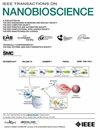毛茛纳米乳剂对血睾丸屏障完整性和TM4支持细胞反应的影响。
IF 4.4
4区 生物学
Q1 BIOCHEMICAL RESEARCH METHODS
引用次数: 0
摘要
余甘子(PN)的治疗效益是众所周知的,特别是在传统医学中。纳米乳技术提高了其生物利用度和功效,但潜在的纳米毒性,特别是对男性生殖健康的潜在毒性尚未完全了解。本研究探讨了不同大小的甘油三酯纳米乳剂(PNNE)对TM4支持细胞的细胞毒性和遗传毒性影响,重点研究了其对血睾丸屏障(BTB)的影响。采用自发乳化法制备了两种不同粒径的PNNE。使用细胞计数试剂盒-8 (CCK-8)试验评估这些配方的细胞毒性,而通过碱性彗星试验评估遗传毒性。此外,通过免疫荧光分析检测BTB蛋白claudin 11和connexin 43的表达。合成的PNNE液滴尺寸分别为16.9±3.31 nm和163.7±8.53 nm。与较大的PNNE (IC50 = 324.4±12.5 μg/mL)相比,较小的PNNE表现出更高的细胞毒性(IC50 = 160.6±8.3 μg/mL),并造成更显著的DNA损伤,彗星实验证明,两种大小的PNNE均导致BTB蛋白表达降低,且较小的纳米颗粒造成更明显的破坏。该研究强调了纳米颗粒大小在决定PNNE对TM4支持细胞的生物学效应中的关键作用。研究发现,较小的PNNE对BTB的完整性和细胞健康更有害,这强调了在纳米乳化疗法的开发中需要仔细优化尺寸。这些发现有助于理解纳米毒性在男性生殖健康方面的作用。本文章由计算机程序翻译,如有差异,请以英文原文为准。
Size-Dependent Effects of Phyllanthus niruri Nanoemulsions on Blood-Testis Barrier Integrity and Cellular Responses in TM4 Sertoli Cells
The therapeutic benefits of Phyllanthus niruri (PN) are well-known, particularly in traditional medicine. Nanoemulsion technology has enhanced its bioavailability and efficacy, but potential nanotoxic effects, especially on male reproductive health, are not fully understood. This study examines the cytotoxic and genotoxic impacts of Phyllanthus niruri nanoemulsions (PNNE) of different sizes on TM4 Sertoli cells, focusing on their effects on the blood-testis barrier (BTB). PNNE of two distinct sizes, were prepared using spontaneous emulsification. The cytotoxicity of these formulations was assessed using a Cell Counting Kit-8 (CCK-8) assay, while genotoxicity was evaluated through an alkaline comet assay. Additionally, the expression of BTB proteins, claudin 11 and connexin 43, was examined via immunofluorescence analysis. PNNE were synthesized with droplet sizes of $16.9~\pm ~3.31$ nm and $163.7~\pm ~8.53$ nm. The smaller PNNE exhibited higher cytotoxicity (IC $50= 160.6~\pm ~8.3~\mu $ g/mL) compared to the larger PNNE (IC $50= 324.4~\pm ~12.5~\mu $ g/mL) and caused more significant DNA damage, as evidenced by the comet assay Both sizes led to a reduction in BTB protein expression, with the smaller nanoparticles causing more pronounced disruption. The study highlights the crucial role of nanoparticle size in determining the biological effects of PNNE on TM4 Sertoli cells. Smaller PNNE were found to be more detrimental to BTB integrity and cellular health, emphasizing the need for careful size optimization in the development of nanoemulsion-based therapies. These findings contribute to the understanding of nanotoxicity in the context of male reproductive health.
求助全文
通过发布文献求助,成功后即可免费获取论文全文。
去求助
来源期刊

IEEE Transactions on NanoBioscience
工程技术-纳米科技
CiteScore
7.00
自引率
5.10%
发文量
197
审稿时长
>12 weeks
期刊介绍:
The IEEE Transactions on NanoBioscience reports on original, innovative and interdisciplinary work on all aspects of molecular systems, cellular systems, and tissues (including molecular electronics). Topics covered in the journal focus on a broad spectrum of aspects, both on foundations and on applications. Specifically, methods and techniques, experimental aspects, design and implementation, instrumentation and laboratory equipment, clinical aspects, hardware and software data acquisition and analysis and computer based modelling are covered (based on traditional or high performance computing - parallel computers or computer networks).
 求助内容:
求助内容: 应助结果提醒方式:
应助结果提醒方式:


